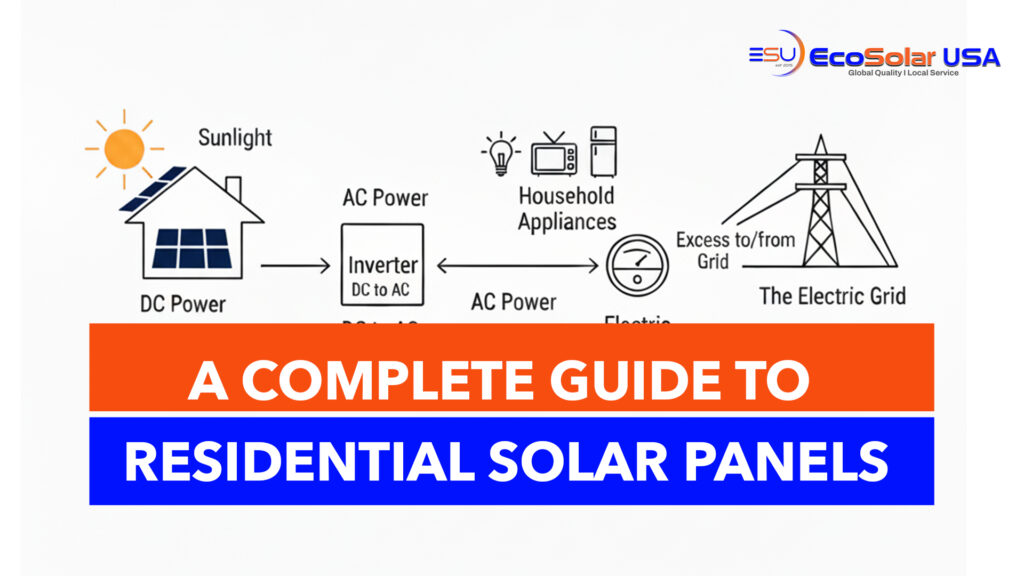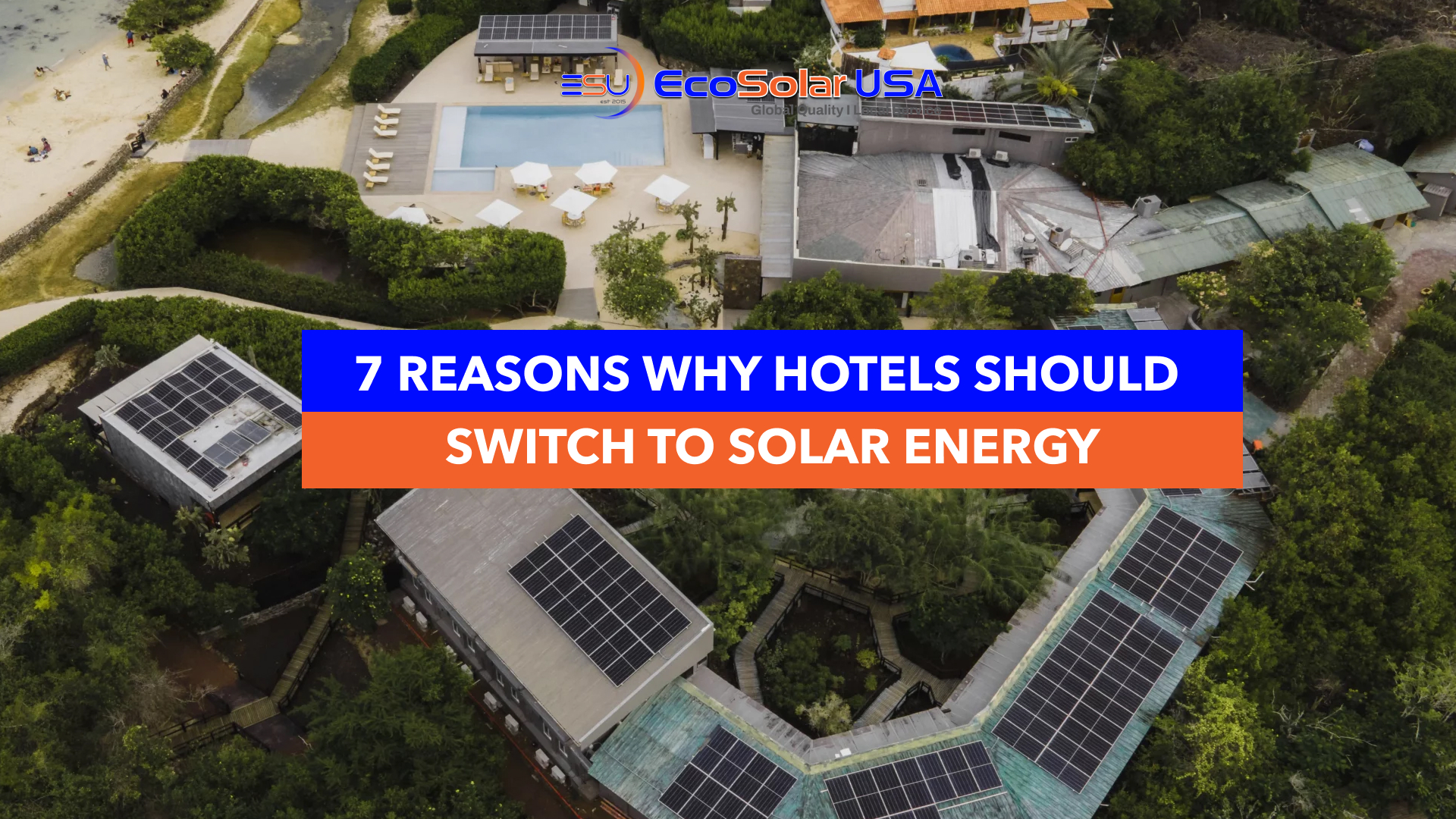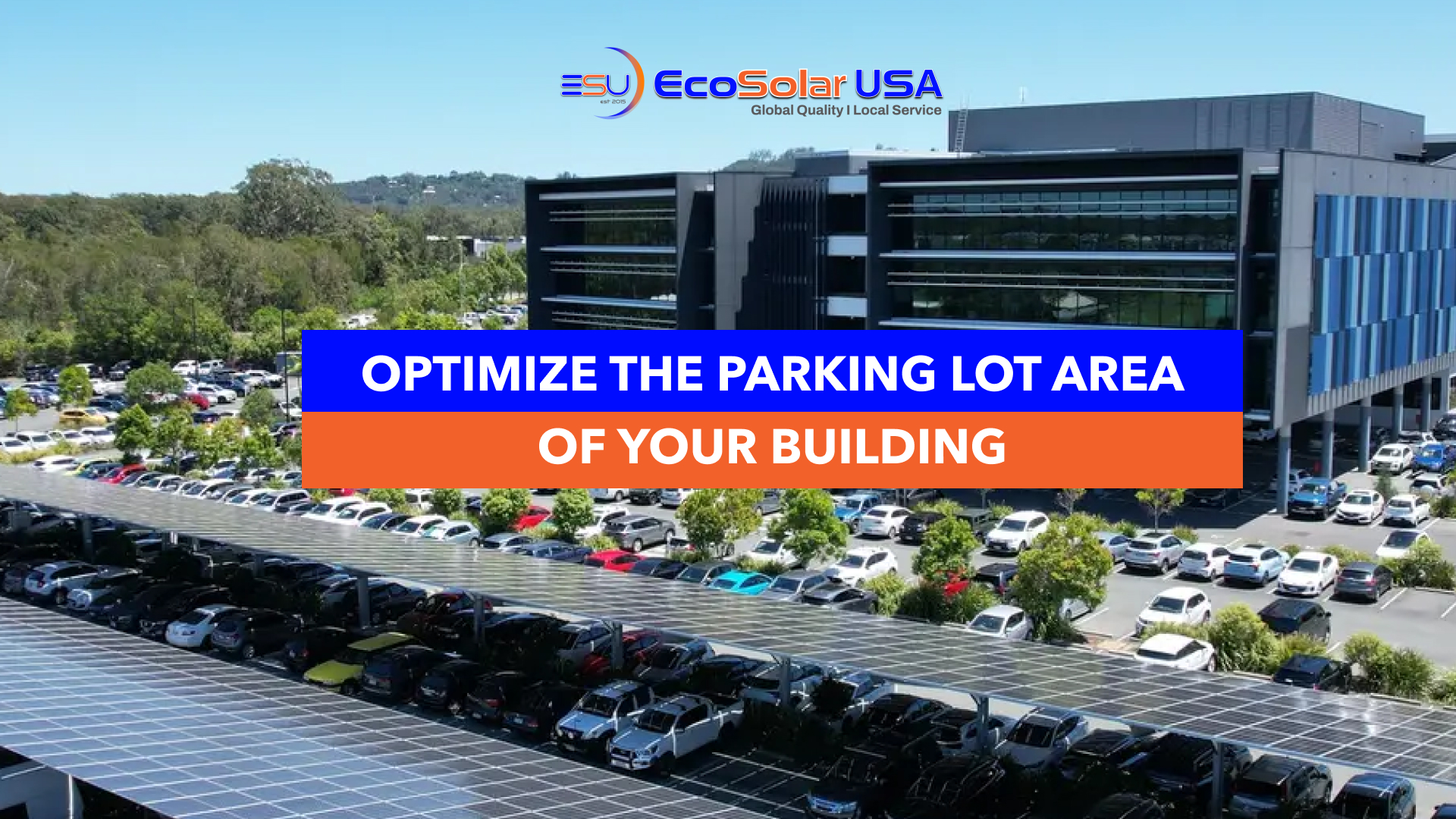
Switching to solar power is one of the smartest decisions homeowners can make today. It not only reduces your electric bills but also adds value to your property while contributing to a cleaner environment. In this guide, we’ll walk you through everything you need to know before installing a residential solar‐panel system—from how it works to how to pay for it. (Based in part on findings from SolarReviews.)
How Do Home Solar Panels Work?
Home solar panels convert sunlight into electricity through photovoltaic (PV) cells. These cells absorb sunlight and generate direct current (DC) electricity. An inverter then converts the DC into alternating current (AC), which is what powers your home appliances and lights. SolarReviews
If your system produces more electricity than your home needs at that moment, the extra energy can often be sent back to the grid (if you have net‐metering) or stored in a battery system for later use. SolarReviews
What Equipment Do You Need for a Solar System?
A complete residential solar setup typically includes:
- Solar Panels – the main component that captures sunlight and converts it to electricity. SolarReviews
- Inverter – converts the DC electricity from the panels into AC electricity usable by your home. SolarReviews
- Mounting System / Racking – secures the panels to your roof or ground, ensures they face the right direction and angle. SolarReviews
- Electrical Panel / Net Meter (if grid-tied) – tracks your system production and how much you get from / send to the utility. SolarReviews
- Battery Storage (optional, for hybrid or off-grid systems) – allows you to store excess production for later use, such as at night or during outages. SolarReviews
- Monitoring / Safety Disconnects – to check performance and integrate with your home electrical system safely.
What Type of Solar Panels Do You Need for Your House? (Size, Quantity, Brand)
When selecting panels for your home, you’ll want to look at several factors:
Panel Type & Brand
- Most residential solar panels are made of silicon and work via the photovoltaic effect. SolarReviews
- You’ll often see monocrystalline, polycrystalline, or thin-film panel technologies. Each has trade-offs in cost, efficiency, and aesthetics.
- Brand quality matters — stronger warranties, better performance, durability and service matter long term.
Size & Quantity
- The number of panels you need depends on your system size (in kW) and the wattage per panel.
- According to SolarReviews: the average U.S. home installation size is about 7.2 kW, which corresponds to approximately 15-19 panels (depending on panel wattage) for many homes. SolarReviews
- To calculate how many panels you need:
Monthly energy usage (kWh)Monthly peak sun hours / Solar panel output (kW) \frac{\text{Monthly energy usage (kWh)}}{\text{Monthly peak sun hours}} \;\Big/ \;\text{Solar panel output (kW)} Monthly peak sun hoursMonthly energy usage (kWh)/Solar panel output (kW)
(As a rough formula from their article.) SolarReviews
How to choose for YOUR house
- Consider your roof’s usable area and orientation.
- Higher efficiency panels allow fewer units (but cost more).
- Brand & warranty: look for strong performance warranties (25 yrs is common) and reputable brands.
- Make sure the panels suit your local climate (heat, humidity, wind, salt-air if near coast).
- If your roof is small or partially shaded, higher-efficiency panels + microinverters/power optimizers can help.
What Size Solar System Do You Need?
Your system size depends on several things: your household’s energy usage, your roof’s sunlight exposure, and your budget.
- SolarReviews states that although the “average” U.S. home installation is ~7.2 kW (~15-19 panels depending on wattage) that may differ widely. SolarReviews
- To estimate: take your monthly usage (kWh), divide by your region’s average peak sun hours, then adjust for panel output, roof/shade losses etc.
- Also consider future usage: Are you going to add an EV? Will usage increase?
- If you have limited roof space or shading issues, you might choose a smaller system or supplement with batteries / efficiency upgrades.
What Do Home Solar Panels Cost?
Cost is one of the most important decision factors. According to SolarReviews:
- In 2025, the average cost for a 7.2 kW system in the U.S. is about $21,816 before incentives, which equates to roughly $3.03 per watt. SolarReviews
- They provide sample costs:
- 4 kW system: ~$12,120 before tax credit SolarReviews
- 6 kW: ~$18,180 before tax credit SolarReviews
- 8 kW: ~$24,240 before tax credit SolarReviews
- 4 kW system: ~$12,120 before tax credit SolarReviews
- They also note that the panels themselves account for only about ~18% of the total installation cost — the rest goes to racking, wiring, installation labour, permitting and other balance‐of‐system costs. SolarReviews
Important: These are U.S. figures. If you’re in another country (e.g., Vietnam) local costs, tariffs, incentives, solar irradiance and labour will differ — so adjust accordingly.
How Much Do Solar Panels Save?
The savings you achieve depend on your electricity rates, system size, and how much sun your installation receives. According to SolarReviews:
- The average homeowner can save about $125 per month on their electric bill after installing solar. SolarReviews
- They also indicate that typical payback time is 10 years or less in many cases for U.S. homes. SolarReviews
- Also, homes with solar panels were found to sell for about 6.9% more on average than homes without solar in their 2024 study. SolarReviews
So, savings come not just from lower bills but also from increased home value.
Are There Incentives for Installing Solar Panels?
Yes — incentives can make a big difference in cost and payback time. From SolarReviews:
- Federal Solar Tax Credit (in the U.S.): equals 30% of the total installation cost. SolarReviews
- Net Metering: Many utilities allow you to get credits for excess solar energy you send back to the grid. SolarReviews
- Local/state rebates and incentives: Depending on your region there may be upfront rebates, performance incentives or accelerated depreciation/credits. SolarReviews
If you’re outside the U.S., check your national/state/local solar rebate programmes, tax credits, feed‐in tariffs, and whether your utility supports net‐metering or grid‐connect.
How to Pay for Solar Panels
There are several financing or payment models to consider:
- Cash Purchase – pay upfront in full; highest return and lowest lifetime cost. SolarReviews
- Solar Loan – you borrow money and repay over time; you own the system and get the incentives. SolarReviews
- Lease or Power Purchase Agreement (PPA) – a company installs the solar system on your roof, you pay for the electricity generated (or lease the system) but you may not own the system. SolarReviews
- When choosing a payment model, consider: upfront cost, ongoing payments/interest, ownership, warranties, maintenance responsibilities, and how that impacts home sale later.
SolarReviews also note that systems owned via cash/loan add more resale value than leased systems. SolarReviews
Is My Home Good for Solar?
Before you commit, you’ll want to evaluate whether your home is a good candidate for solar. SolarReviews lists these criteria:
- You have high electricity bills: High utility bills make solar more attractive because your savings are larger. SolarReviews
- Your utility company is solar-friendly: Good net‐metering policies are key; some utilities offer full retail credit for excess solar, others much less favourable. SolarReviews
- Your roof is good for solar: Ideally: south-facing (in Northern Hemisphere) or the local orientation that receives the most sun; minimal shading; not too old (so you don’t replace roof soon after solar), enough space (> ~265 sq ft maybe) etc. SolarReviews
- You qualify for solar incentives: If you won’t get tax credits or your utility has unfavourable policies, solar may be less worthwhile. SolarReviews
If your home doesn’t check all of these, it doesn’t mean you can’t go solar — but the returns might be lower or you might need to adjust expectations (smaller system, storage, shading mitigation etc).
How to Go Solar
Here is a typical step‐by‐step process for going solar (based on the SolarReviews guide):
- Find trusted, local installers – seek companies with good reviews, in-house installation crews, certifications (e.g., NABCEP in the U.S.), experience. SolarReviews
- Review multiple quotes – compare system size (kW), cost per watt, estimated energy production, warranties, financing options. SolarReviews
- Install the system – after contract you get design, permitting, scheduling; installation may take a day or more; permitting/inspection can take weeks or months. SolarReviews says the full process often takes between 2–6 months in many jurisdictions. SolarReviews
- Inspection & activation – once approved by the utility/inspector you flip the switch and the system starts producing.
- Monitor performance & maintain – most systems require minimal maintenance; monitor production and ensure warranty/maintenance obligations are met.
Going solar is more than just a home improvement — it’s a long-term investment in energy independence, financial savings, and sustainability. According to data from SolarReviews, the average U.S. homeowner saves about $125 per month on electricity and recoups the system cost in 10 years or less, while also increasing home resale value.
However, every home and location is unique. Factors such as sunlight exposure, roof condition, electricity rates, and available incentives will influence your actual savings. That’s why it’s essential to work with a trusted, experienced solar installer who can customize a system that fits your property and energy goals.
At Eco Solar USA, we make it simple to switch to clean energy. From consultation and system design to installation and permitting, our expert team ensures every homeowner gets maximum performance and long-term value from their solar investment.



